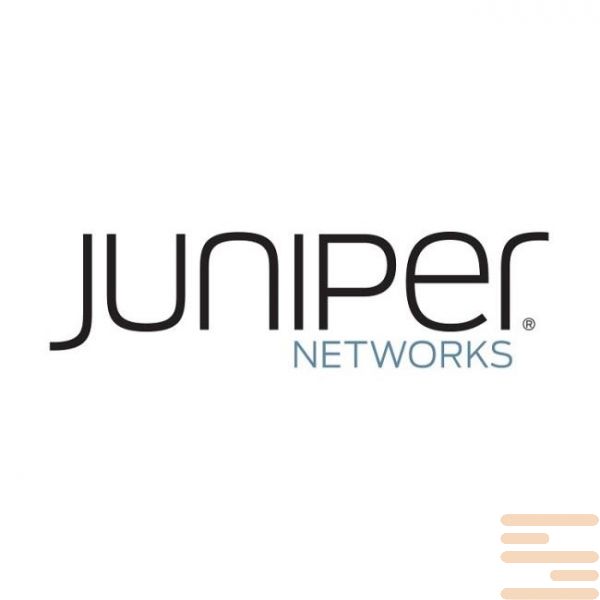Interface boards or line cards Juniper Networks (line card, interface module) allow you to expand your router or switch (modular platform, chassis) Required functional, including the necessary access ports at speeds 1GbE, 10GbE, 40GbEor 100GbE, control boards (switch control board) etc..
Interface boards Juniper represented by various modules that are compatible with a particular series (for example. interface module MS-MIC-16G compatible with the entire range Juniper MX, and the module MPC-3D-16XGE-SFPP series compatible MX240, MX480 andMX960).
interface board MIC (Modular Interface Cards) is a small-sized module that provides physical connection to various types of network devices. MIC the board can support various physical interfaces in one module. module Juniper MICs also support hot swapping and plugging. For example, in routers MX series, interface module MIC installed in the module MPC (Modular Port Concentrator), and in series from MX5 before MX104 module MPC already built in chassis.
interface module Juniper MPC (Modular Port Concentrator) provides transfer services Lkand packages. module MPC encapsulates packets and passes them through the module's outgoing interfaces MIC. everyone MPC module equipped with up to four chipsets Junos Trio, which performs the functions of management. For example, a router Juniper MX960 supports installation of up to 12 modules MPCs, and the platform MX480 before 3 MPCs. For proper operation module Juniper MPC You need to use high-performance cooling modules. Online Juniper http://www.juniper.net there is a calculator for calculating the recommended power and cooling power, for a specific series and used MPC modules.
Interface modules DPC (Dense Port Concentrators) Provides several physical interfaces and pass systems Lkand packages on a single board that fits into a slot in a router or modular chassis. module DPC accepts incoming packets and sends outgoing packets to the network.
module Juniper PIC (Physical Interface Card) installed in FPC (Flexible PIC Concentrators), similar to how they work MIC andMPC modules. PICs modules provide physical interfaces, and FPCs boards provide transfers Lkfor packets on the network. everyone FPCthe module is equipped with a microchip ASIC, which performs the functions of management, and FPC supports installation of 2 modules PIC.
Technical characteristics of the interface module Juniper MIC-3D-4COC3-1COC12-CE:
|
Software release
|
- Junos OS Release 12.2 and later
|
|
Description
|
- Four OC3/STM1 ports
- Rate-selectable using one of the following rates:One channelized OC12/STM4 port (down to DS0)
- 4-port OC3/STM1
- 1-port OC12/STM4
- SONET or SDH is configurable on a MIC level
- OC3 channelization:
- 4 OC3 channel
- 336 DS1 channels
- 2016 DS0 channels (combination of nxDS0)
- SDH channelization:Power requirement: 2.83 A @ 12 V (33.96 W)
- 4 STM1 channel
- 252 E1 channels
- 2016 DS0 channels (combination of nxDS0)
- Weight: 1.63 lb (0.74 kg)
- Model number: MIC-3D-4COC3-1COC12-CE
|
|
Hardware features
|
- Ports are numbered 0 through 3
|
|
Software features
|
- Per-MIC SONET/SDH framing
- Internal and loop clocking
- Encapsulations:
- Pseudo Wire Emulation Edge-to-Edge (PWE3) Architecture (RFC 3985)
- Requirements for Pseudo-Wire Emulation Edge-to-Edge (PWE3) (RFC 3916)
- Structure-Agnostic Time Division Multiplexing (TDM) over Packet (SAToP) (RFC 4553)
- Structure-Aware Time Division Multiplexed (TDM) Circuit Emulation Service over Packet Switched Network (CESoPSN) (RFC 5086)
- Pseudowire Emulation Edge-to-Edge (PWE3) Control Word for Use over an MPLS PSN (RFC 4385)
- L2 Network Interconnections (protocol stitching)
|
|
Interfaces
|
- Syntax: mediatype-fpc/pic/port where:
- mediatype: coc3, coc12, cstm1, cstm4, or ds
- fpc: Slot in the router where the MPC is installed
- pic: 0 when installed in MIC slot 0 or 2 when installed in MIC slot 1
- port: 0 through 3
- For example, cstm4-1/2/0 is the channelized STM4 interface for port 0 on the MIC installed in MIC slot 1 on an MPC installed in slot 1.
|
|
Cables and connectors
|
- Tip: You can use the Hardware Compatibility Tool to find information about the pluggable transceivers supported on your Juniper Networks device.
- The list of supported transceivers for the MX Series is located at https://pathfinder.juniper.net/hct/category/#catKey=100001&modelType;=All&pf;=MX+Series.
- Note: To extend the life of the laser, when a MIC is not being actively used with any valid links, take the MIC offline until you are ready to establish a link to another device. For information about taking a MIC offline, see the request chassis pic offline command in the Junos OS System Basics and Services Command Reference.
|
|
LEDs
|
- OK/FAIL LED, one bicolor:
- Green—MIC is functioning normally
- Red—MIC has failed
- LINK LED, one tricolor per port:
- Off—Not enabled
- Green—Online with no alarms or failures
- Yellow—Online with alarms for remote failures
- Red—Active with a local alarm; router has detected a failure
|
|
Alarms, errors, and events
|
- Structure-agnostic alarms for T1 and E1 interface:
- Alarm indication signal (AIS)
- Loss of signal (LOS)
- Line code violation (LCV)
- Errored seconds (ES)
- Line-errored seconds (LES)
- Severely errored seconds (SES)
- Unavailable errored seconds (UAS)
- Structure aware alarms for T1 and E1 interface:
- Severely errored frame (SEF)
- Block error event (BEE)
- Loss of frame (LOF)
- Yellow alarm (remote alarm indication RAI)
- Path code violation (PCV)
- Severely errored frame seconds (SEFS)
- Bursty errored seconds (BES)
|

Log In